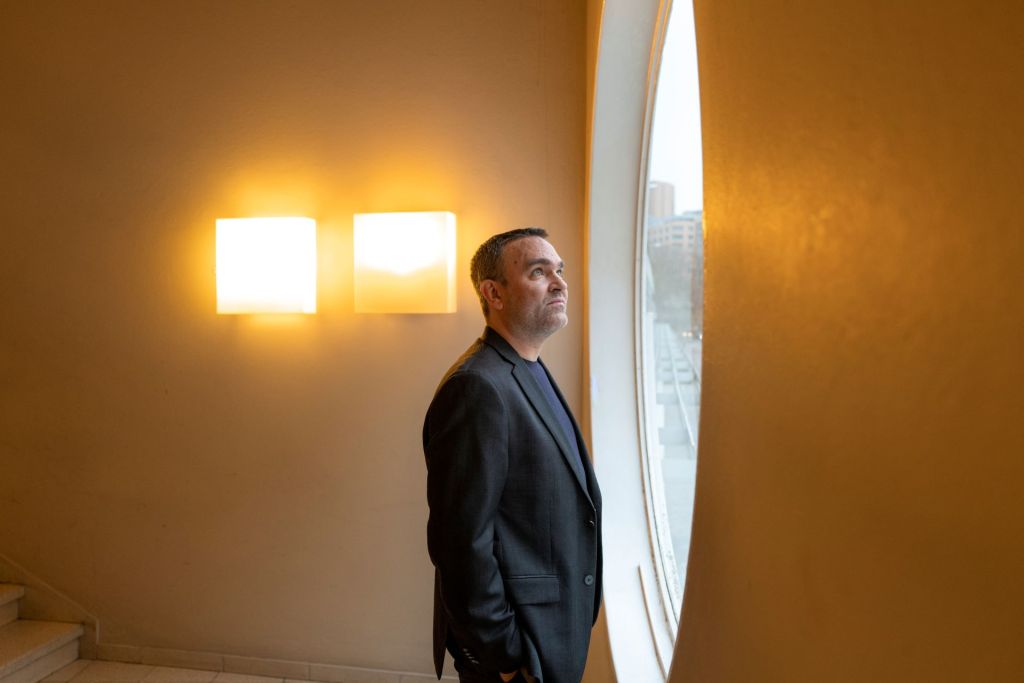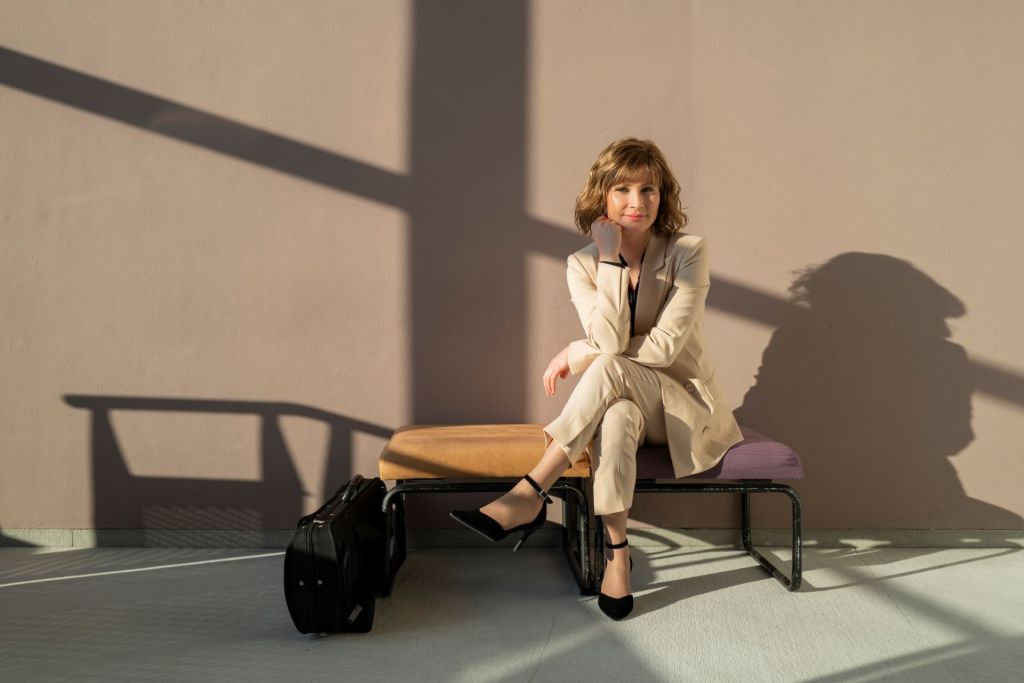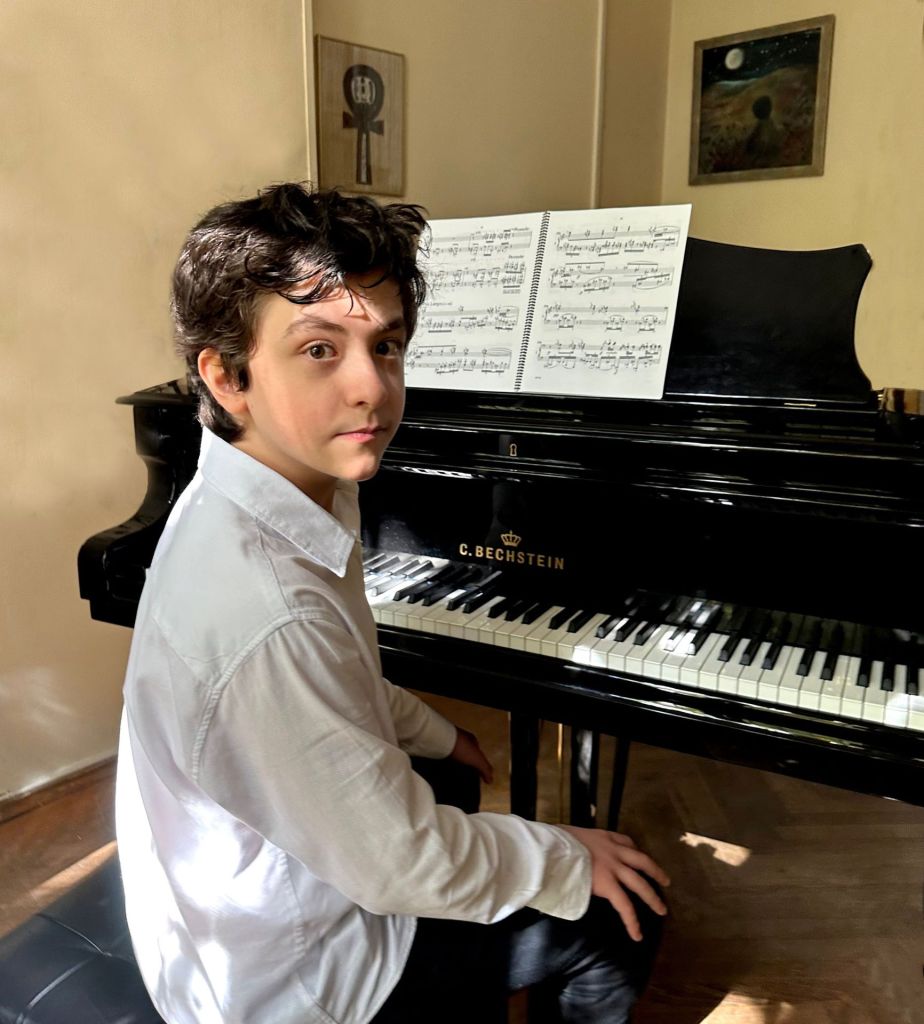
An evening of many inspired meetings took place at the Kammermusiksaal of the Berlin Philharmonie on Wednesday, as Artist-in-Residence, violinist Lisa Batiashvili and Composer-in-Residence and clarinetist Jörg Widmann, joined by pianist Denis Kozhukhin, young composer and pianist Tsotne Zedginidze and members of the Berliner Philharmoniker, presented the in-house audience with a marvelously conceived chamber music programme extending from the early 20th century to contemporary works, including an intriguing world premiere.
The evening’s opener, Widmann’s early trio for clarinet, violin and piano, Tränen der Musen (Tears of the Muses, 1993/1996), addresses the perennial question about the relationship between the arts and politics: do the Muses have the right to remain silent when the weapons speak? Provoked by the atrocities of the Bosnian War, the composer’s commentary bears harrowing contemporary echoes, thus further intensifying the profound musical impact of the ca. twelve-minute trio.
On purely musical level – if such a thing really exists within our mindsets – the instrumental setup of Tränen der Musen is inevitably associated with two notable 20th century entries into the medium, namely Béla Bartók’s Contrasts (1938) and Igor Stravinsky’s trio arrangement of his L’Histoire du Soldat (1917/1918). However, despite some superficial similarities regarding chiaroscuro overall ambiance and allusions to folk material, Widmann’s score stems from musical blueprints very much of its own.
Dark and pensive, the solo clarinet opens the very free introductory section with quasi-improvisatory descending patterns, eventually transformed into duo sequence with violin. The pianist joins, eventually, laying down chordal pulsations. Fragmented folk dance patterns ensue, bursting into triple-forte eruptions, followed by meditative doloroso, pierced by anguished piano interjections. In the concluding Visionario, the music reaches quasi-stasis, fading away with extremely slow coda, colored by the pianist’s fingernail pizzicati.
A performance of utmost intensity and refined dialogue, Tränen der Musen caught the full attentive focus of everyone present, to deeply moving effect. Throughout the expansive dynamic scale of the score, the music was brought to life with tangible sonorous expressivity.
A small but significant world premiere outing ensued, as Tsotne Zedginidze took the stage with a five-minute Impromptu (2024) for piano solo, followed by his earlier Sonata for Violin and Piano (2021), written for Batiashvili. Born in 2009, the Georgian composer and pianist displays affinity for several 20th century idioms, which he then fuses together into inspired sounding continuums. The newly-written impromptu is primed with pointillist opening gesture, out of which cycles of ever more elaborate melodic lines are drawn and developed. Permuting in somewhat Bergian manner, Zedginidze’s Impromptu celebrates the subtle art of transformation, captivatingly realized in performance by the composer.
The ca. ten-minute Violin Sonata is based on tonally more straightforward root material. Rhythmically shaped by the piano, the score opens with swinging scherzando figurations of the violin, juxtaposed with lyrical second subject. The introductory jest resurfaces, only soon to be contrasted by a concentrated passage of whispered instrumental conversation, which then grows quite passionate, recalling some early works by Alban Berg, Serge Prokofieff and Erich Wolfgang Korngold. The pianist leads the sonata to a rhythmic burst, before stepping aside to allow the violinist her marvelous cadenza. A playful recap of the opening mood is heard, before the sonata cools down to its close.
Given in splendid reading by Batiashvili and Zedginidze, the Violin Sonata is a charmer.
Concluding the first half, Claude Debussy’s final completed work, the exquisite Sonata (1916-17) for violin and piano was heard in terrific outing from Batiashvili and Kozhukhin. Cast in three movements, the ca. thirteen-minute score marks the composer’s third entry to his projected series of Six sonates pour divers instruments. Left unfinished upon the composer’s passing in March 2018, Debussy’s previous entries to the cycle include a Cello Sonata (1915) as well as a Sonata for Flute, Viola and Harp (1915). Taken together, the three sonatas present us with some of the finest examples of early 20th century chamber music.
In the Violin Sonata, fast outer movements, marked Allegro vivo and Très Animé, respectively, frame Fantasque et léger central interlude, constituting a sensuous musical entity of virtuosity and evocation, one awash with fine-tuned harmonic progressions, clad in textures of expressive nuance and pristine translucence. As performed by Batiashvili and Kozhukhin, the sonata was enclosed in colorist raiment of dazzling invention, marking one of the absolute highlights of the evening. Gorgeously phrased, the material was articulated with refined sense of dramaturgy – to a spellbinding effect.

Heard after the intermission, Widmann’s eleven-movement suite for piano, Zirkustänze (Circus Dances, 2012), is a feast of musical characterization. Coming in the heels of the composer’s Brahms-tinged Intermezzi (2010), the ca. twenty-minute suite can be performed either in its entirety or as individual movements or encores. Both scores were initially written for and premiered by András Schiff.
“My dark and shadowy piano Intermezzi are followed by these Zirkustänze. They are naturally – on a superficial level – simpler, more cheerful, brighter and also more garish, drastic and playful than my previous composition, but my objective in these dances involving the protagonists of a circus is a simple but profound and omnipresent truth: there is a constant real danger that the tightrope walker will fall. On the subject of our childlike amazement as an observer: it is not our amazement which is false, but the fact that we adults think we are no longer allowed to feel this emotion! And although the tears of the sad clown are artificial, they are nevertheless highly realistic”, Widmann writes in his note.
True to their on-point titles, all eleven movements stem from the score’s ingenious core fusion of playfulness and poignancy, resulting in engrossing musical journey. Crisp Fanfare serves as preamble, followed by buoyant Boogie-Woogie, which becomes more and more derailed after each iteration. A reflective Waltz ensues, paired with aptly nostalgic Four Verses on Homesickness. Deliriously grandiloquent Bavarian Waltz takes the stage, contrasted by contemplative Valse sentimentale with biting high-notes embedded. Teasing Children’s Rhyme lives up to its name, as does carillon-inspired Carousel Waltz, another brilliant trainwreck of a tableau. Hebrew Melody combines gorgeous mesto lyricism with piercing sfffz shouts, whereas Venetian Gondola song sets the listener adrift on a river of associations. As conclusion, a steadfast Bavarian Babylonian March is sounded out, interwoven with some splendid parody.
Given in tour-de-force presentation by Kozhukhin, the full narrative scope of Zirkustänze was translated into vivid musical interpretation, keeping the listeners nailed to their seats as only the finest instrumental theater does.
Rounding off the evening in appealingly lopsided manner, Prokofieff’s Overture on Hebrew Themes, op. 34 (1919) for clarinet, piano and string quartet served as the perfect endcap. Written in New York, the ten-minute score takes its cue from an ensemble of Russian-Jewish musicians the composer heard during his years in the city. Although derived from folk sources, the material is imbued with Prokofieff’s stylistic fingerprints. In context of Wednesday’s program, the overture tied together several musical threads woven into the set-list, thus appearing as sounding afterthought, beautifully performed by Widmann, Kozhukhin and the members of the Berliner Philharmoniker, Alessandro Cappone, first violin, Rachel Schmidt, second violin, Micha Afkham, viola and Solène Kermarrec, cello.

Lisa Batiashvili, violin
Jörg Widmann, clarinet
Denis Kozhukhin, piano
Tsotne Zedginidze, piano
Members of the Berliner Philharmoniker
Alessandro Cappone, violin
Rachel Schmidt, violin
Micha Afkham, viola
Solène Kermarrec, cello
Jörg Widmann: Tränen der Musen (1993/1996) for clarinet, violin and piano
Tsotne Zedginidze: Impromptu (2024) for piano solo (world premiere)
Tsotne Zedginidze: Sonata for Violin and Piano (2021)
Claude Debussy: Sonata (1916-17) for violin and piano
Jörg Widmann: Zirkustänze (2012) for violin and piano
Serge Prokofieff: Overture on Hebrew Themes, op. 34 (1919) for clarinet, piano and string quartet
Philharmonie Berlin, Kammermusiksaal, Berlin, Germany
Wednesday 10 April, 8 pm
© Jari Kallio
Leave a comment